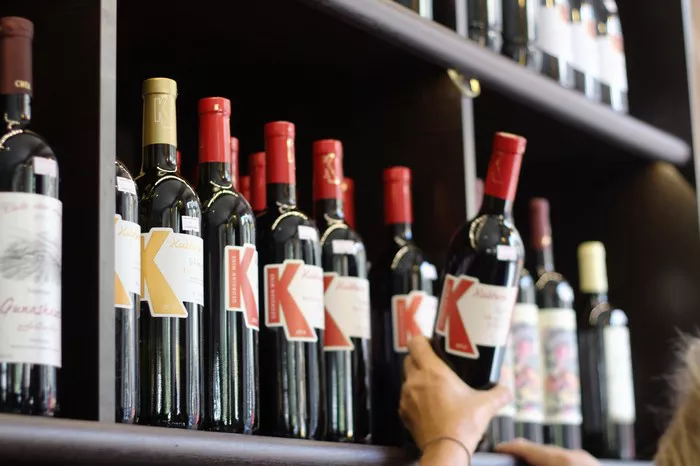Chardonnay is one of the most popular white wines in the world. Known for its versatility and rich flavors, this wine is enjoyed by many. Whether you’re sipping a glass at dinner or toasting with friends, you might wonder about the caloric content in your favorite varietal. This article will provide a detailed look at how many calories are in a 6 oz glass of Chardonnay, exploring various factors that influence its caloric content.
In wine, calories come from two primary sources: alcohol and sugar. The amount of each in a wine affects its overall caloric count. Understanding these components will help you make informed choices about your wine consumption.
Caloric Breakdown of Chardonnay
1. Alcohol Content and Calories
The alcohol content in Chardonnay typically ranges from 13% to 14.5%. Higher alcohol levels mean more calories. This is because each gram of alcohol contains about 7 calories. For instance, a 6 oz glass of Chardonnay with 14% alcohol would contain approximately 1.2 oz of pure alcohol.
To calculate the calories from alcohol, we can use this formula:
Calories from alcohol = (Alcohol by volume (ABV) x 0.6) x 7 calories/gram.
Using a 14% ABV Chardonnay as an example, the calculation would look like this:
14% ABV = 0.14 (in decimal)
0.14 x 0.6 oz = 0.084 oz of pure alcohol
0.084 oz = approximately 2.38 grams of alcohol
Calories from alcohol = 2.38 grams x 7 = 16.66 calories from alcohol in a 6 oz glass.
This gives you a solid foundation for understanding how much of the caloric content comes from the alcohol itself.
2. Residual Sugar in Chardonnay
Chardonnay can vary in sweetness. Some wines are dry, while others have a noticeable sweetness. The residual sugar contributes additional calories. On average, a dry Chardonnay may contain about 1 to 3 grams of sugar per 6 oz glass. A sweeter Chardonnay can have upwards of 5 grams or more.
Using the average sugar content:
Calories from sugar = grams of sugar x 4 calories/gram.
For example, if we take a drier Chardonnay with 2 grams of sugar, the calculation would be:
2 grams x 4 = 8 calories from sugar.
Combining this with our previous calculation, we see that a 6 oz glass of a 14% ABV Chardonnay with 2 grams of sugar would have around 24.66 calories total from alcohol and sugar.
Comparing Different Types of Chardonnay
1. Different Styles of Chardonnay
Chardonnay comes in various styles, each affecting its caloric content. Some are fermented in oak barrels, adding creamy and buttery flavors. Others are stainless steel fermented, leading to a crisper finish. Oak aging can also contribute slight variations in residual sugar.
Oaked Chardonnay typically has a richer mouthfeel and may contain more calories due to the potential for added sugar during the fermentation process. Conversely, unoaked Chardonnay tends to be lighter and might be lower in calories.
2. The Influence of Region on Caloric Content
The region where the grapes are grown can impact the caloric content as well. For example, Chardonnays from warmer climates, like California, may have higher sugar levels due to riper grapes. In contrast, Chardonnays from cooler regions, like Chablis in France, tend to be drier with lower sugar content.
This variation means that a 6 oz glass of Chardonnay can range from approximately 120 to 150 calories or even more, depending on the factors mentioned.
Nutritional Aspects of Chardonnay
1. Calories and Health Considerations
When considering your caloric intake, it’s essential to understand how wine fits into your overall diet. While a 6 oz glass of Chardonnay can contain 120 to 150 calories, it’s crucial to enjoy it in moderation.
Moderation is key to enjoying wine without overindulging. The general recommendation for alcohol consumption is up to one drink per day for women and up to two for men. This helps manage caloric intake while still allowing for enjoyment.
2. Health Benefits and Risks
Chardonnay, like many wines, offers some potential health benefits when consumed in moderation. Some studies suggest that moderate wine consumption can be associated with heart health benefits. However, it’s vital to balance these potential benefits with the risks of excessive alcohol consumption.
While the calories in wine can add up, enjoying a glass of Chardonnay can be part of a healthy lifestyle. Being mindful of portion sizes and overall caloric intake is essential.
See Also: What Food Goes Best with Chardonnay?
Practical Tips for Enjoying Chardonnay
1. Choosing the Right Chardonnay
When selecting a Chardonnay, consider what you enjoy. If you prefer a lighter wine, opt for unoaked varieties. If you like a richer, creamier texture, choose an oaked Chardonnay. Each style will have a different caloric content.
Reading labels can also help. Some wines will provide nutritional information, including calories. This can guide your choices when selecting a bottle.
2. Pairing Chardonnay with Food
Chardonnay is versatile and pairs well with various dishes. Whether you’re enjoying seafood, poultry, or a light pasta, a well-chosen Chardonnay can enhance your meal.
Keep in mind that food can also affect how your body processes wine. Eating a balanced meal while enjoying a glass can mitigate some of the caloric impact.
Conclusion
In conclusion, understanding the caloric content of a 6 oz glass of Chardonnay is essential for anyone who enjoys wine. With calories primarily coming from alcohol and residual sugar, the overall count can vary based on the wine’s style and region.
With an average of 120 to 150 calories per serving, Chardonnay can fit into a balanced diet when consumed responsibly. Enjoying wine in moderation while being mindful of its caloric content can help you make informed decisions about your wine consumption.
In your next glass of Chardonnay, remember the factors that contribute to its flavor and caloric content. Cheers to enjoying your wine knowledgeably!
You Might Be Interested In:


